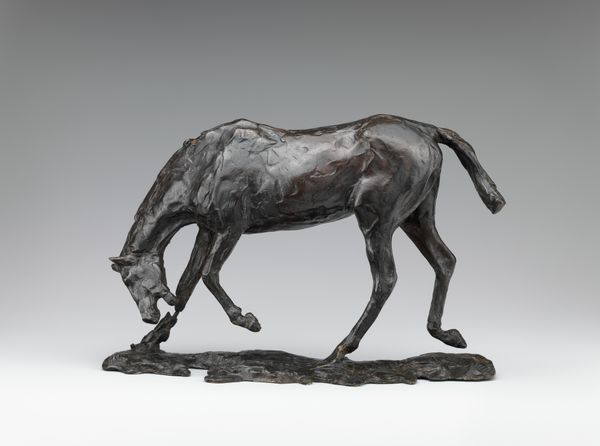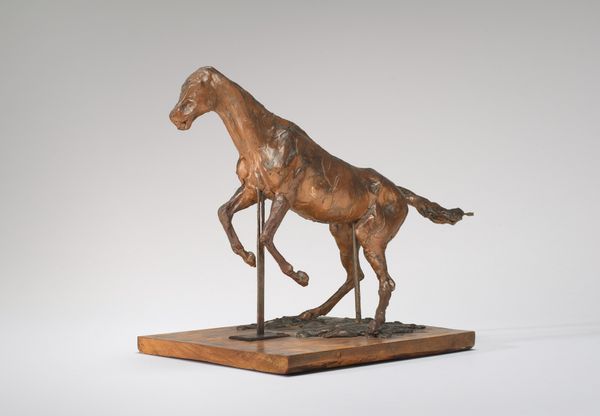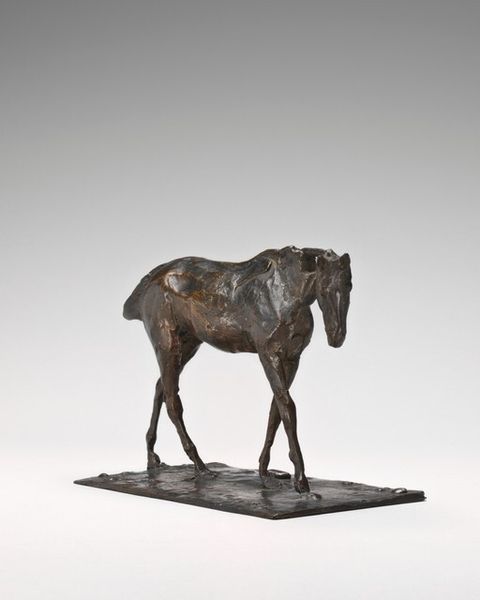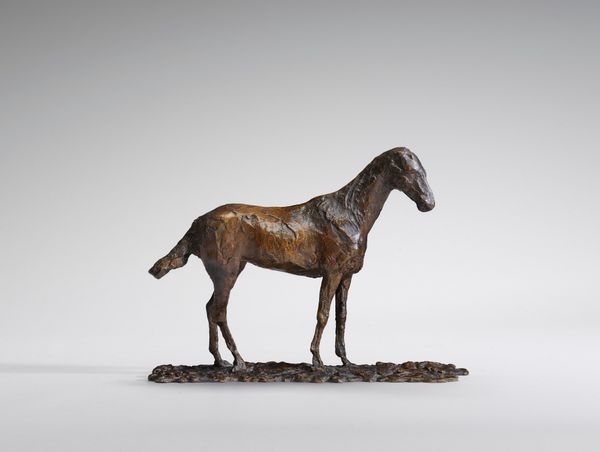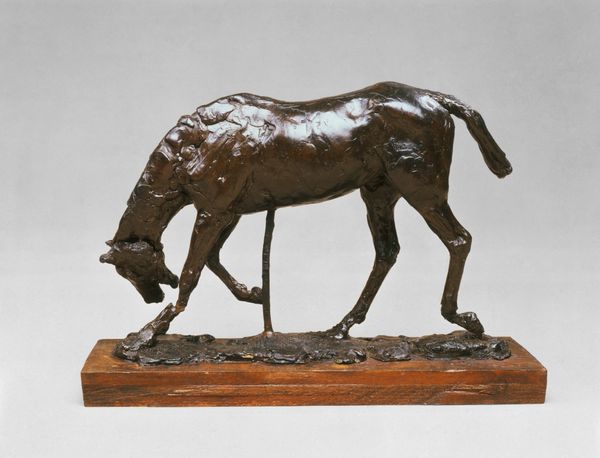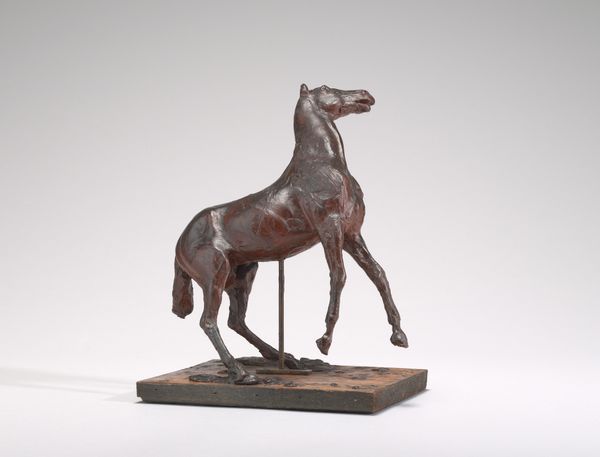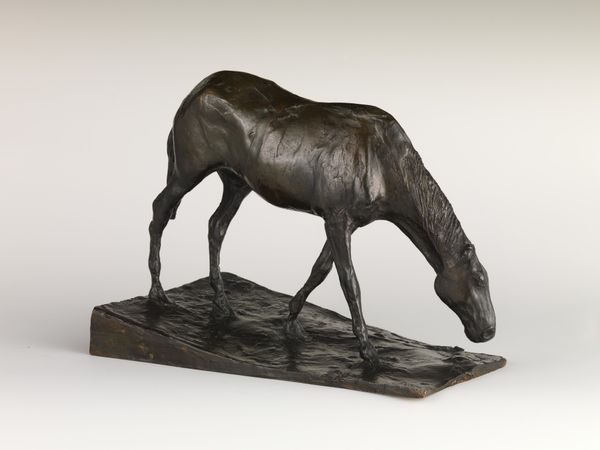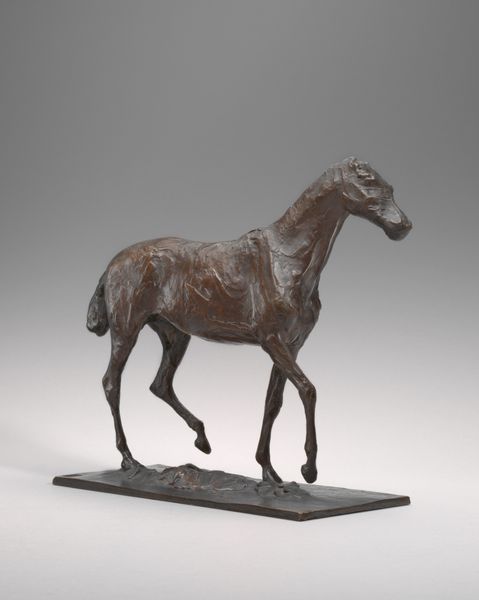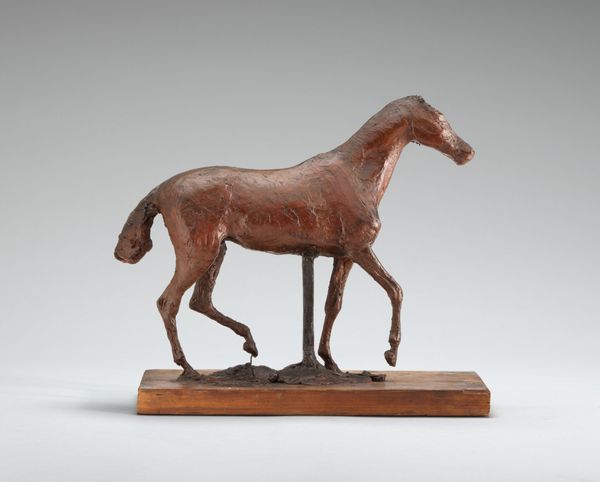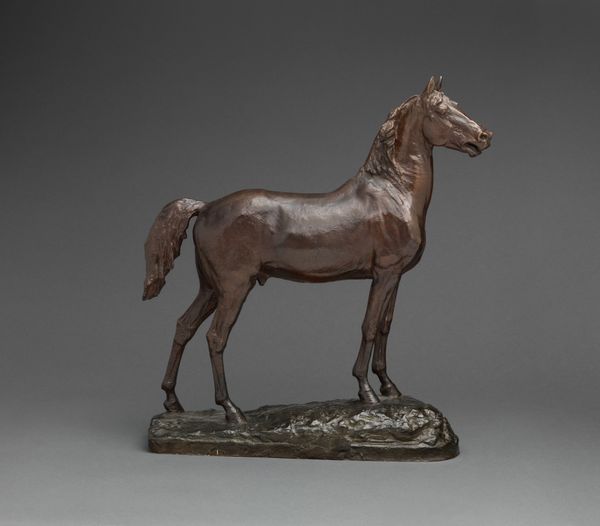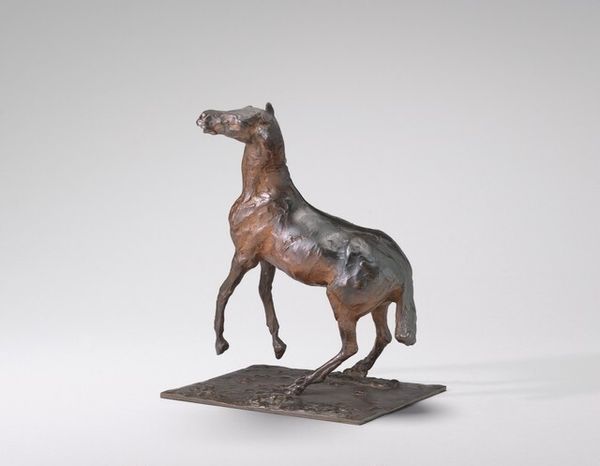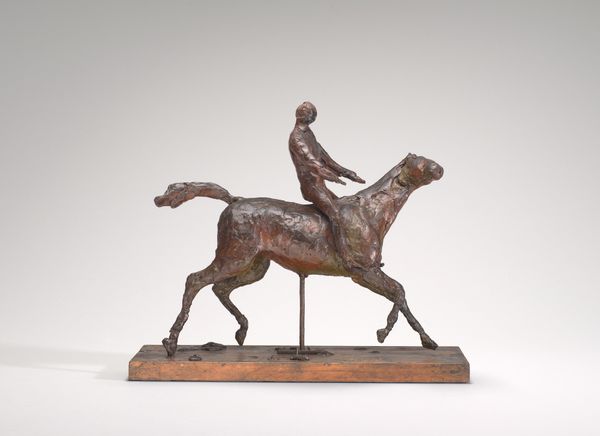
Thoroughbred Horse Walking, Part of the Neck Missing c. early 1870s
0:00
0:00
bronze, sculpture
#
animal
#
impressionism
#
sculpture
#
bronze
#
figuration
#
sculpture
Dimensions: overall without base: 12.7 x 4.5 x 21.4 cm (5 x 1 3/4 x 8 7/16 in.)
Copyright: National Gallery of Art: CC0 1.0
Edgar Degas fashioned this wax sculpture of a *Thoroughbred Horse Walking, Part of the Neck Missing* sometime around the late 19th century, a period of significant social change and artistic experimentation. Degas was a man of his time, his artistic vision shaped by the rigid class structures and traditional expectations of 19th century France. It is impossible to view this sculpture in isolation from its historical context. Degas, though celebrated, also held views that reflected the biases of his era. The fragmented form of the horse invites us to consider themes of vulnerability and power. Degas was known for his fascination with capturing movement, his choice to depict the horse in motion suggests an interest in the dynamics of action and force. Yet, the missing section of the neck introduces an element of incompleteness. What does it mean to represent such a powerful animal as somehow broken or unfinished? Perhaps, it's a reflection on the social and cultural moment itself, marked as it was, by both progress and profound gaps.
Comments
No comments
Be the first to comment and join the conversation on the ultimate creative platform.
